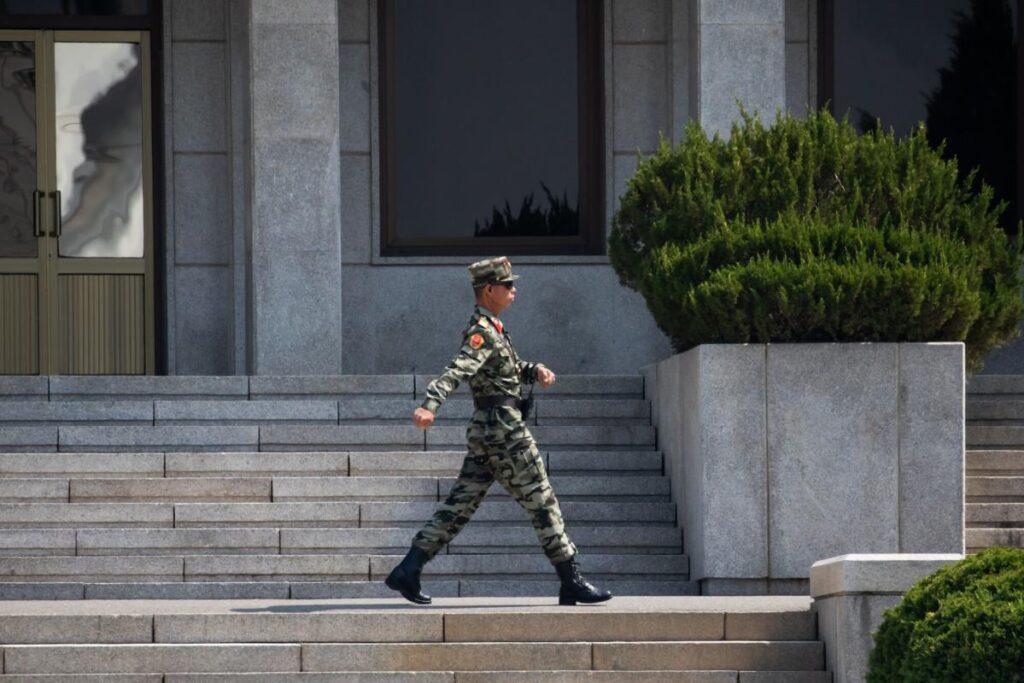Tensions between North and South Korea have escalated as North Korea recently ordered its troops on high alert after accusing Seoul of deploying drones over its capital, Pyongyang. The North claims the incursion is a deliberate act of “war provocation,” prompting a stern response from its military leadership. On October 12, the general staff directed artillery units to prepare for immediate retaliatory strikes on enemy targets should similar incidents occur again. According to the state-run Korean Central News Agency, North Korea alleges that South Korea has sent drones across the border on three occasions this month, releasing leaflets that disparage the Kim Jong Un regime. This accusation has rekindled fears of military confrontation along the already volatile border.
In response, South Korea’s Joint Chiefs of Staff have asserted that they are closely monitoring North Korean movements and are poised to counter any potential provocations. While South Korea has been reticent about confirming drone activity across the border, it emphasized that North Korea’s instability derives from what they characterize as “trash balloons”. In a noteworthy condemnation, the JCS warned North Korea to cease flying these balloons, which have been sent over the border as a protest against joint military exercises conducted by South Korea and the US. The aerial balloons have not only generated diplomatic ire but have also posed practical challenges, sometimes causing fires in South Korea, prompting authorities to exercise caution in addressing them.
The escalation of hostilities has raised concerns over the security dynamics on both sides of the inter-Korean divide. North Korea has been known to consistently launch large plastic balloons filled with trash across the demilitarized zone as a form of psychological warfare, which South Korea regards as an infringement on its sovereignty. Despite these provocations, South Korean forces have intentionally refrained from engaging with these balloons due to fears of unintended consequences, such as the potential spread of hazardous materials or causing collateral damage amid civilian populations.
As both countries amplify their military readiness, the North Korean artillery units have been ordered to maintain “full wartime strength,” with additional military branches placed on heightened alert. This directive underscores an increasing willingness by North Korea to escalate tensions in response to perceived threats from the South. The North Korean government’s narrative depicts these drone incursions as serious provocations that merit a military response, with a commitment to retaliate against any future violations, raising the stakes in an already precarious geopolitical landscape.
Moreover, North Korea’s recent military activities include a significant focus on advancing their unmanned aerial vehicle (UAV) capabilities. In August, they showcased a suicide attack drone, signifying a strategic shift towards enhancing their offensive aerial capabilities. This emphasis on drone warfare underlines Kim Jong Un’s prioritization of military modernization, despite ongoing international sanctions and scrutiny regarding their nuclear ambitions. The threat perception has intensified since a past incident where North Korean drones infiltrated South Korean airspace, causing security alarms and embarrassing failures among South Korean defense forces to effectively counter the UAVs.
As both sides navigate this increasingly perilous military escalation, analysts have warned that the risk of miscalculation could lead to severe consequences. The specter of North Korea conducting a nuclear test as it seeks further military advancements cannot be ignored, particularly against the backdrop of important political events such as the upcoming US presidential election. While military rhetoric has sharpened and activity intensified, the broader implications of these developments signify the fragility of peace on the Korean Peninsula and hint at the daunting challenges that lie ahead for diplomatic resolution in the face of rising tensions.

